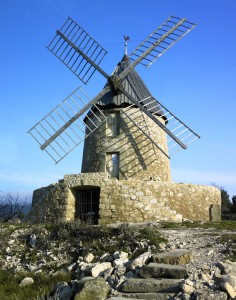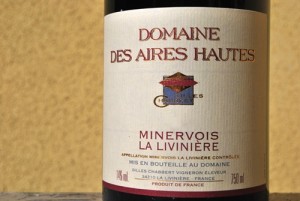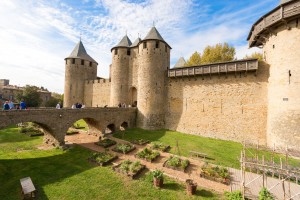 The wine region of Minervois, located just north of Corbieres in France’s western Languedoc region, is named for the village of Minerve, which is itself named for Minerva, the Roman goddess of wisdom.
The wine region of Minervois, located just north of Corbieres in France’s western Languedoc region, is named for the village of Minerve, which is itself named for Minerva, the Roman goddess of wisdom.
The region has a long history of wine production, dating back to early Roman, or even pre-Roman times. In modern times, the Minervois was granted an AOC in 1985, and since that time, the wines of the area have increased in quality due to significant investments in equipment, infrastructure, and improved vineyard management.
The Minervois AOC covers dry red wines based on Grenache, Syrah, and Mourvèdre, which together must make up at least 60% of the blend, and may be rounded out by Carignan and Cinsaut. The region’s white wines, which may be dry or sweet, are generally made from a variable blend including Bourboulenc, Vermentino, Rousanne, Marsanne, and Grenache Blanc. A sweet version of the white wine, made from late harvest and/or dried grapes, is referred to as Minervois Noble, but does not have its own appellation.
 Almost immediately upon the granting of the 1985 Minervois AOC, the producers of La Livinière, a small corner in the northern portion of the area, began to lobby for an AOC of their own. In 1999 they were successful, and the Minervois–La Livinière AOC, for dry red wine only, was born. The area covered by the appellation includes the village of La Livinière itself, as well as five others nearby: Cesseras, Siran, Felines-Minervois, Azille and Azillanet.
Almost immediately upon the granting of the 1985 Minervois AOC, the producers of La Livinière, a small corner in the northern portion of the area, began to lobby for an AOC of their own. In 1999 they were successful, and the Minervois–La Livinière AOC, for dry red wine only, was born. The area covered by the appellation includes the village of La Livinière itself, as well as five others nearby: Cesseras, Siran, Felines-Minervois, Azille and Azillanet.
The 30 or so producers of Minervois-La Livinière, tucked into the Petit Causse foothills of the south-facing Black Mountains, abide by a slew of standards that are quite a bit stricter than those that apply to the wines produced under the “basic” Minervois AOC. For one, yields are 45 hectoliters per hectare (hls/ha) vs. the 50 allowed for the basic wines, and eight additional months of aging are required.
 Another tough rule involves the “agrément” tasting that is done in November, the year after harvest. Each stage of the three-stage tasting involves a producer, an enologist, and a merchant; and the final outcome is pass or fail. If a wine passes, it can wear the title of Minervois-La Livinière, and if not, it can be bottled under the “basic” Minervois AOC. The tasting panel, it seems, is tough; the M-LL board rejects between 30 – 40% of all wines submitted. This is a higher rejection rate than any other appellation in France; the percentage rejected for the country as a whole is closer to 5%.
Another tough rule involves the “agrément” tasting that is done in November, the year after harvest. Each stage of the three-stage tasting involves a producer, an enologist, and a merchant; and the final outcome is pass or fail. If a wine passes, it can wear the title of Minervois-La Livinière, and if not, it can be bottled under the “basic” Minervois AOC. The tasting panel, it seems, is tough; the M-LL board rejects between 30 – 40% of all wines submitted. This is a higher rejection rate than any other appellation in France; the percentage rejected for the country as a whole is closer to 5%.
Wines that qualify as Minervois-La Livinière are authorized to use a specific label style which includes a cap with the La Livinère logo and a quality guarantee number. Minerva, and Minervois, should be proud!
For more information, see the entry on Minervois-La Liviniere wines at Languedoc.com. http://www.languedoc-wines.com/english/aoc_liviniere.asp
Click here to return to the SWE Website.